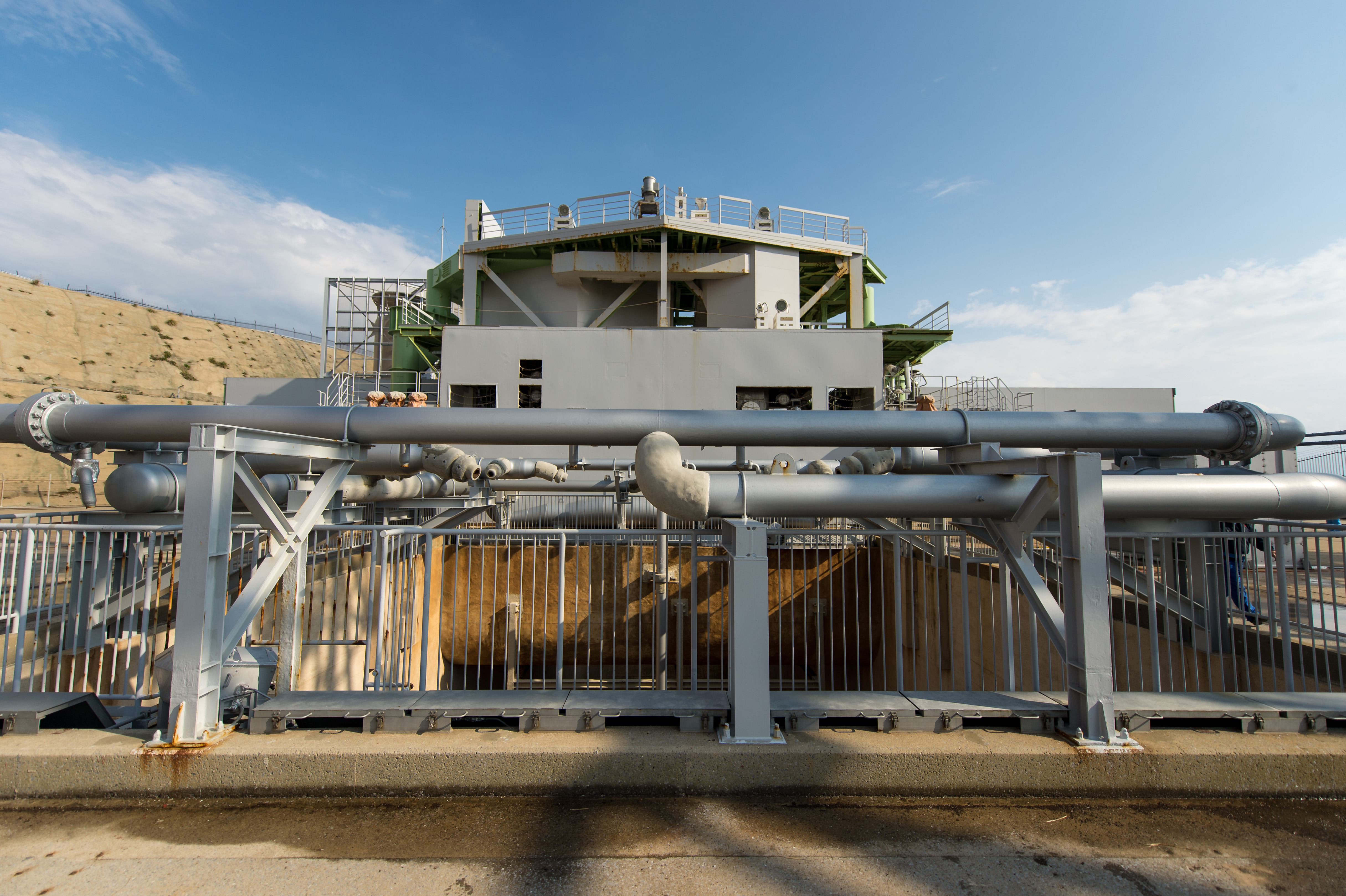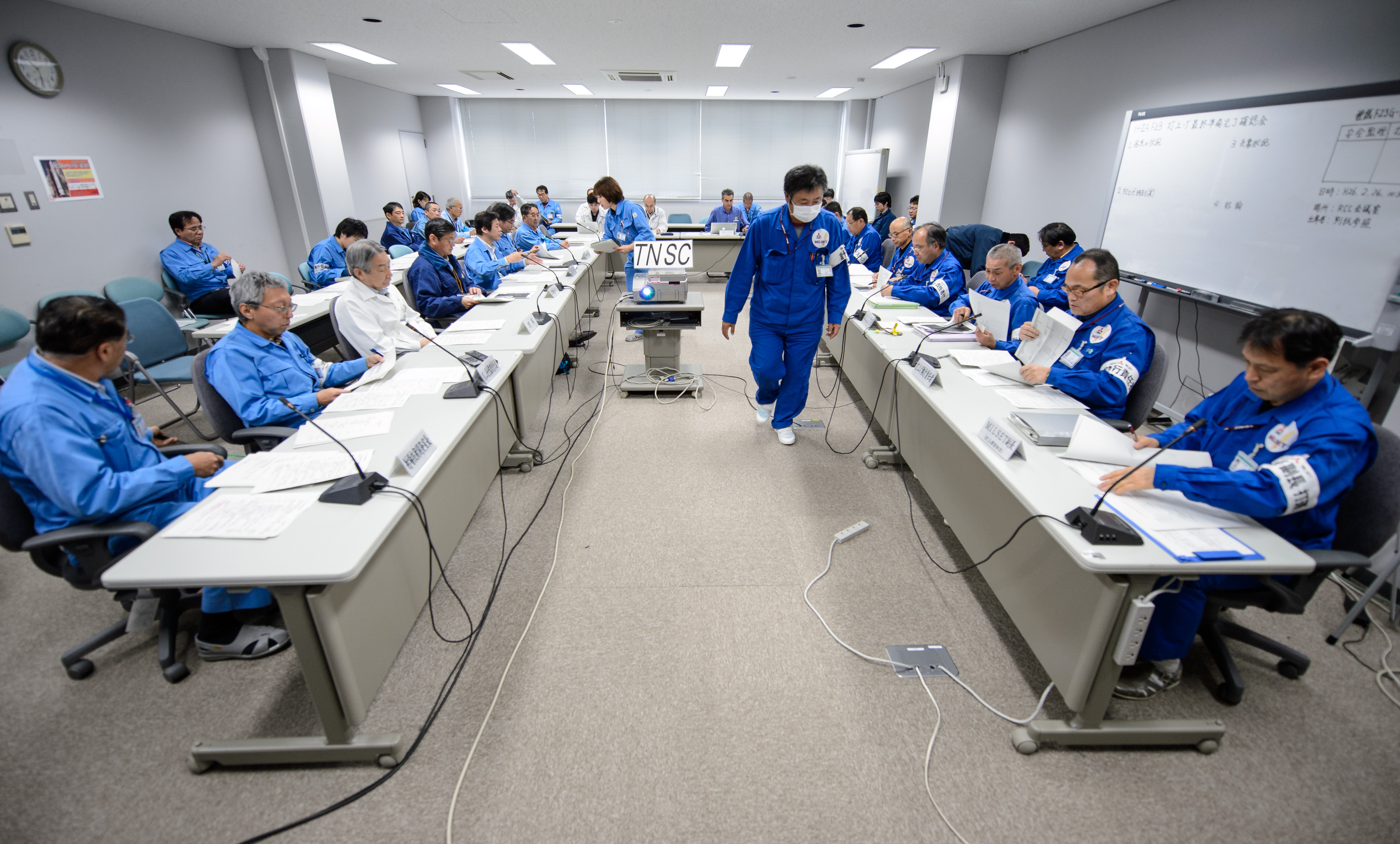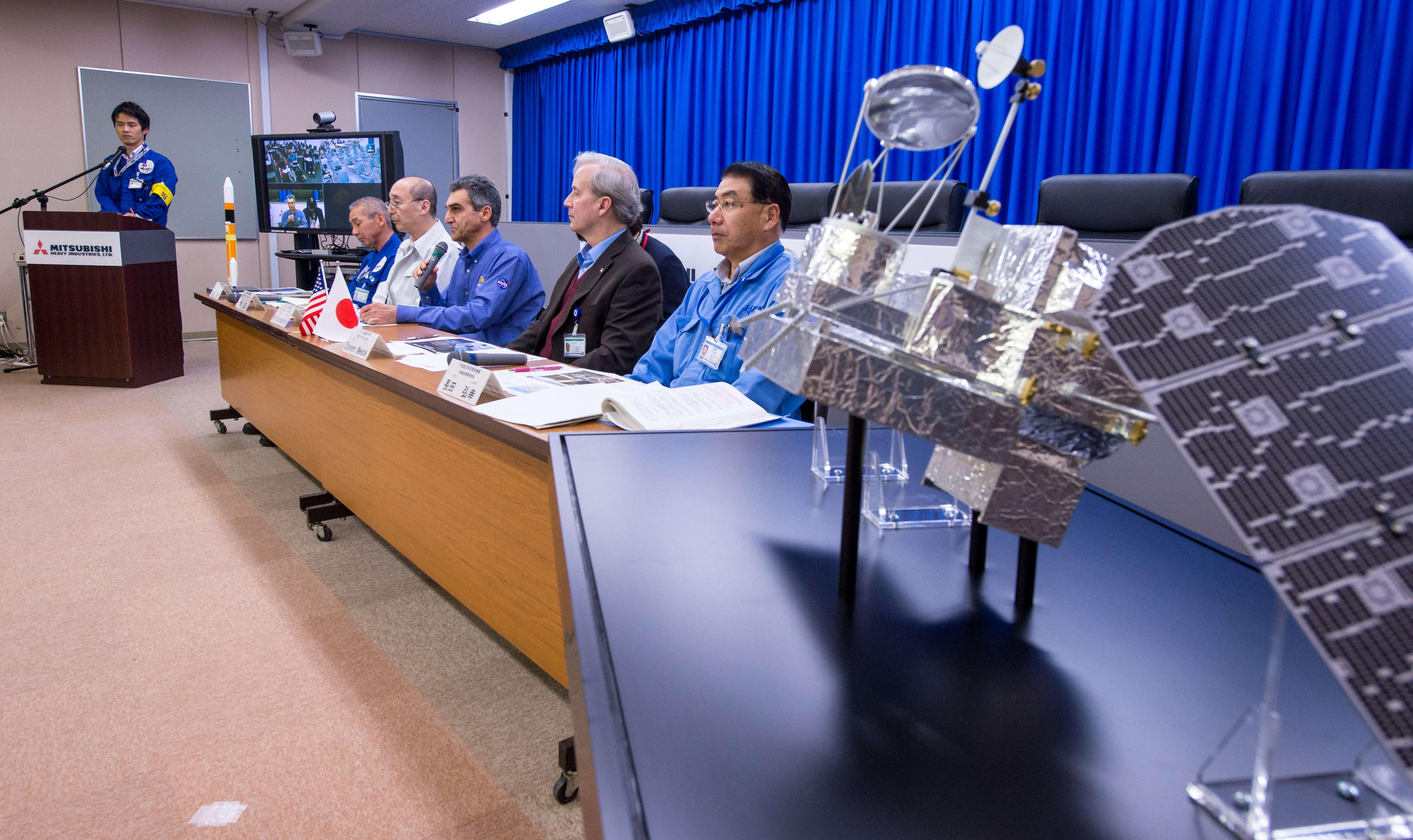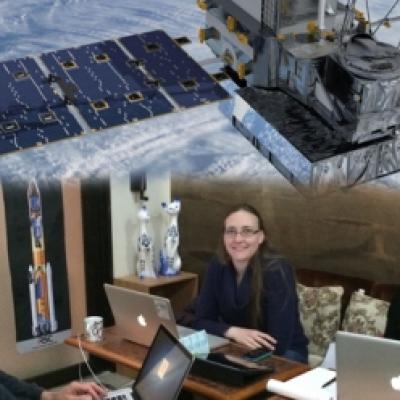JAXA
Waiting for Launch
The Global Precipitation Measurement mission's Core Observatory is poised for launch from the Japan Aerospace Exploration Agency's Tanegashima Space Center, scheduled for the afternoon of Feb. 27, 2014 (EST).
GPM is a joint venture between NASA and the Japan Aerospace Exploration Agency. The GPM Core Observatory will link data from a constellation of current and planned satellites to produce next-generation global measurements of rainfall and snowfall from space.
GPM's Launch Pad

Launch pad 1 is seen at the Tanegashima Space Center (TNSC) on Monday, Feb. 24, 2014 in Tanegashima, Japan. A Japanese H-IIA rocket carrying the NASA-Japan Aerospace Exploration Agency (JAXA), Global Precipitation Measurement (GPM) Core Observatory is planned for launch from pad 1 on Feb. 28, 2014. Once launched, the GPM spacecraft will collect information that unifies data from an international network of existing and future satellites to map global rainfall and snowfall every three hours. Photo Credit: (NASA/Bill Ingalls)
Surfing at Tanegashima Space Center

A surfer navigates the waters in front of the Tanegashima Space Center (TNSC) launch pads on Sunday, Feb. 23, 2014, Tanegashima Island, Japan. A Japanese H-IIA rocket carrying the NASA-Japan Aerospace Exploration Agency (JAXA), Global Precipitation Measurement (GPM) Core Observatory is planned for launch from the space center on Feb. 28, 2014. Once launched, the GPM spacecraft will collect information that unifies data from an international network of existing and future satellites to map global rainfall and snowfall every three hours. Photo Credit: (NASA/Bill Ingalls)
GPM Launch Readiness Meeting

Chief officers from Mitsubishi Heavy Industries, Ltd., the Japan Aerospace Exploration Agency (JAXA) and NASA met on Wednesday, Feb. 26, 2014 in the Range Control Center (RCC) of the Tanegashima Space Center, Japan, to review the readiness of the Global Precipitation Measurement (GPM) Core Observatory for launch. The spacecraft is scheduled to launch aboard an H-IIA rocket early on the morning of Feb. 28 Japan time.
JAXA "Three Shrine Pilgrimage" Ceremony

Japan Aerospace Exploration Agency (JAXA) team members bow at the Ebisu Shrine, the first shrine in a traditional San-ja Mairi, or Three Shrine Pilgrimage, where the team prays for a successful launch, Tuesday, Feb. 25, 2014, Tanegashima Island, Japan. A Japanese H-IIA rocket carrying the NASA-JAXA, Global Precipitation Measurement (GPM) Core Observatory is planned for launch from the space center on Feb. 28, 2014.
GPM Technical Briefing

Seated from left: Tatsuo Namikawa, Director, Mitsubishi Launch Site Service Team (MILSET), Mitsubishi Heavy Industries, Ltd., Masahiro Kojima, GPM Dual-frequency Precipitation Radar project manager, Japan Aerospace Exploration Agency (JAXA), Art Azarbarzin, NASA Global Precipitation Measurement (GPM) project manager, Steven Neeck, NASA Deputy Associate Director, Flight Programs, Earth Science Division, and, Hiroyuki Nagata, Director Range Technology Development Office Space Transportation Mission Directorate, Japan Aerospace Exploration Agency (JAXA) are seen during a technical briefing for
GPM's Last Stop Before Orbit
Art Azarbarzin, NASA's Global Precipitation Measurement mission project manager, and Mashahiro Kojima, the Japan Aerospace Exploration Agency's GPM/DPR project manager, reflect on the long journey the GPM Core Observatory spacecraft has taken to reach its last stop before orbit, the Tanegashima Space Center, Japan, from where the mission's Core Observatory is scheduled to launch on the afternoon of Feb. 27, 2014 (EST).


